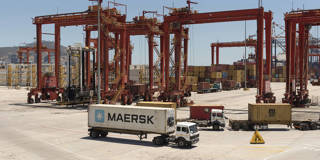Strengthening the trade between African countries is a necessary first step toward equipping the continent to engage with the world economy on its own terms. For too long, Africa has been trading with others on terms that ensure its place at the bottom of the global value chain.
WASHINGTON, DC – Despite aspirational narratives about “Africa Rising,” the continent has yet to achieve the prosperity increasingly found across large swaths of Asia and many other parts of the world. To attain genuine, inclusive prosperity (beyond aggregate GDP growth), Africa needs stronger trade performance, without which no country or continent has lifted its people out of poverty. Yet Africa’s share of world trade has long been stuck at around 3%.

WASHINGTON, DC – Despite aspirational narratives about “Africa Rising,” the continent has yet to achieve the prosperity increasingly found across large swaths of Asia and many other parts of the world. To attain genuine, inclusive prosperity (beyond aggregate GDP growth), Africa needs stronger trade performance, without which no country or continent has lifted its people out of poverty. Yet Africa’s share of world trade has long been stuck at around 3%.